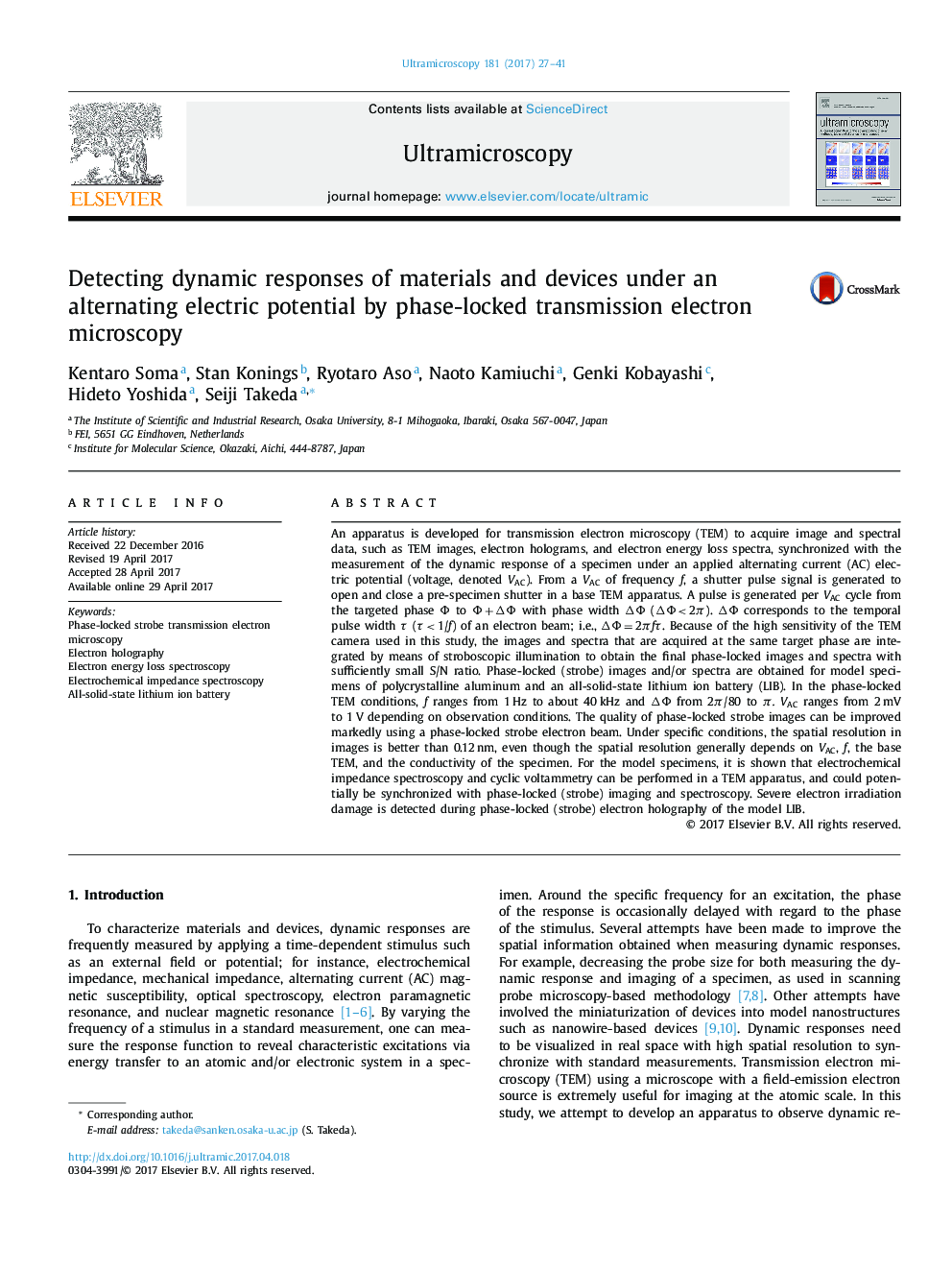| Article ID | Journal | Published Year | Pages | File Type |
|---|---|---|---|---|
| 5466652 | Ultramicroscopy | 2017 | 15 Pages |
Abstract
An apparatus is developed for transmission electron microscopy (TEM) to acquire image and spectral data, such as TEM images, electron holograms, and electron energy loss spectra, synchronized with the measurement of the dynamic response of a specimen under an applied alternating current (AC) electric potential (voltage, denoted VAC). From a VAC of frequency f, a shutter pulse signal is generated to open and close a pre-specimen shutter in a base TEM apparatus. A pulse is generated per VAC cycle from the targeted phase Φ to Φâ+ âΦ with phase width âΦ (âΦâ< 2Ï). âΦ corresponds to the temporal pulse width Ï (Ïâ<â1/f) of an electron beam; i.e., âΦâ= 2ÏfÏ. Because of the high sensitivity of the TEM camera used in this study, the images and spectra that are acquired at the same target phase are integrated by means of stroboscopic illumination to obtain the final phase-locked images and spectra with sufficiently small S/N ratio. Phase-locked (strobe) images and/or spectra are obtained for model specimens of polycrystalline aluminum and an all-solid-state lithium ion battery (LIB). In the phase-locked TEM conditions, f ranges from 1 Hz to about 40 kHz and âΦ from 2Ï/80 to Ï. VAC ranges from 2 mV to 1 V depending on observation conditions. The quality of phase-locked strobe images can be improved markedly using a phase-locked strobe electron beam. Under specific conditions, the spatial resolution in images is better than 0.12 nm, even though the spatial resolution generally depends on VAC, f, the base TEM, and the conductivity of the specimen. For the model specimens, it is shown that electrochemical impedance spectroscopy and cyclic voltammetry can be performed in a TEM apparatus, and could potentially be synchronized with phase-locked (strobe) imaging and spectroscopy. Severe electron irradiation damage is detected during phase-locked (strobe) electron holography of the model LIB.
Keywords
Related Topics
Physical Sciences and Engineering
Materials Science
Nanotechnology
Authors
Kentaro Soma, Stan Konings, Ryotaro Aso, Naoto Kamiuchi, Genki Kobayashi, Hideto Yoshida, Seiji Takeda,
